Your Millwork Questions Answered (a Q&A)
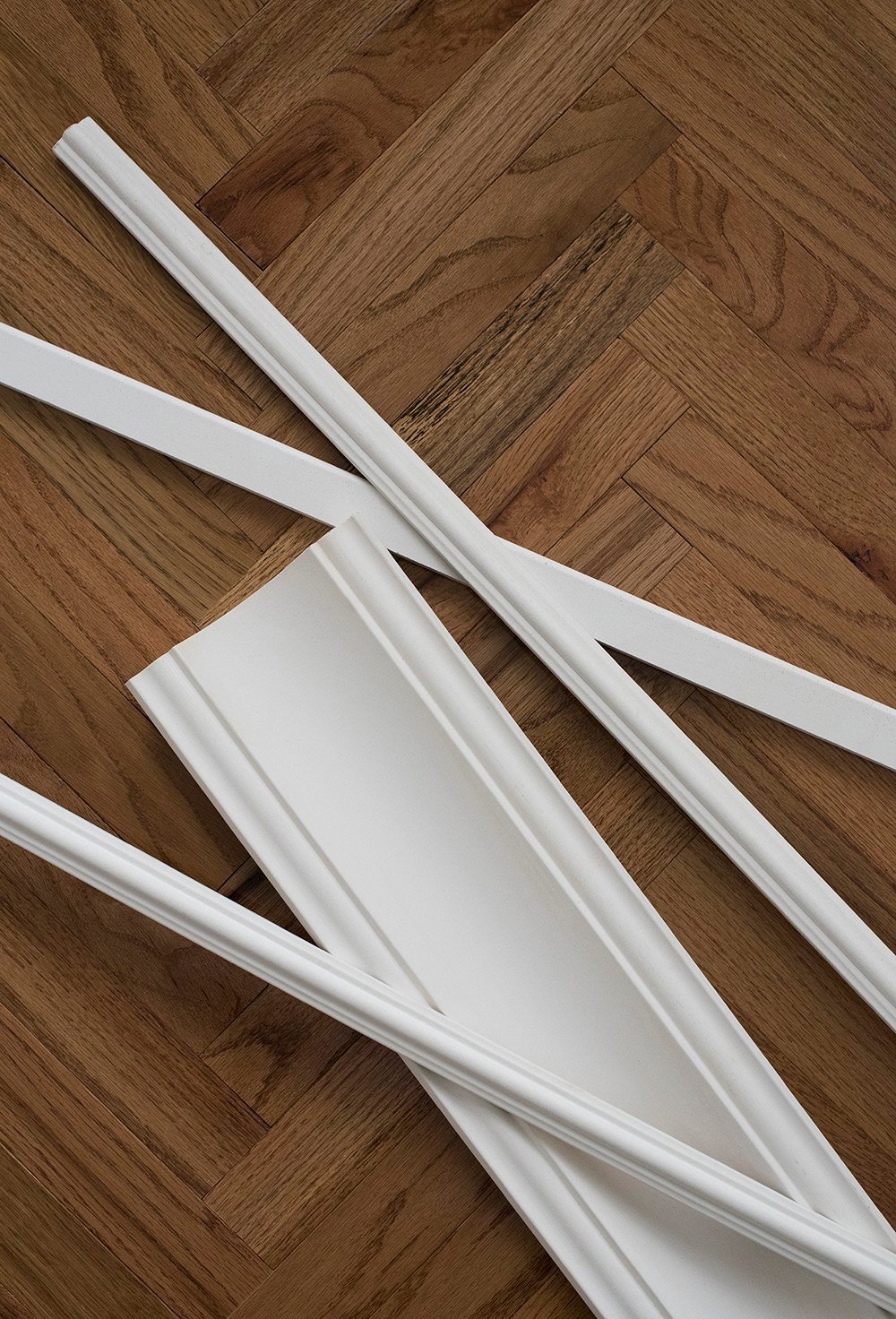 Awhile back, I asked everyone to submit their burning millwork questions, and you did not disappoint! In fact, I was a little overwhelmed with the amount of messages and comments I received. I figured the best way to respond to everyone’s amazing questions was with a Q&A blog post, since many were repeats. I’m cramming as many helpful answers as I can into this one, but also know that I’ve added a handful of detailed, in-depth millwork posts to the blog calendar. Click through for a BIG rapid-fire millwork Q&A… I hope it’s helpful!
Awhile back, I asked everyone to submit their burning millwork questions, and you did not disappoint! In fact, I was a little overwhelmed with the amount of messages and comments I received. I figured the best way to respond to everyone’s amazing questions was with a Q&A blog post, since many were repeats. I’m cramming as many helpful answers as I can into this one, but also know that I’ve added a handful of detailed, in-depth millwork posts to the blog calendar. Click through for a BIG rapid-fire millwork Q&A… I hope it’s helpful!
How do you determine what style of millwork goes with your home?
This a frequently asked question that I’d like to expand upon in a larger post, but you first have to understand the architectural style of your home. Once you have that information, you can narrow down what size, style, and type of millwork will work best with your existing architecture or the aesthetic you’re going for. If you aren’t sure about the style, I linked a LOT of helpful books and resources in this post. Here is another good blog post to read– with a helpful graphic that can help you narrow it down!
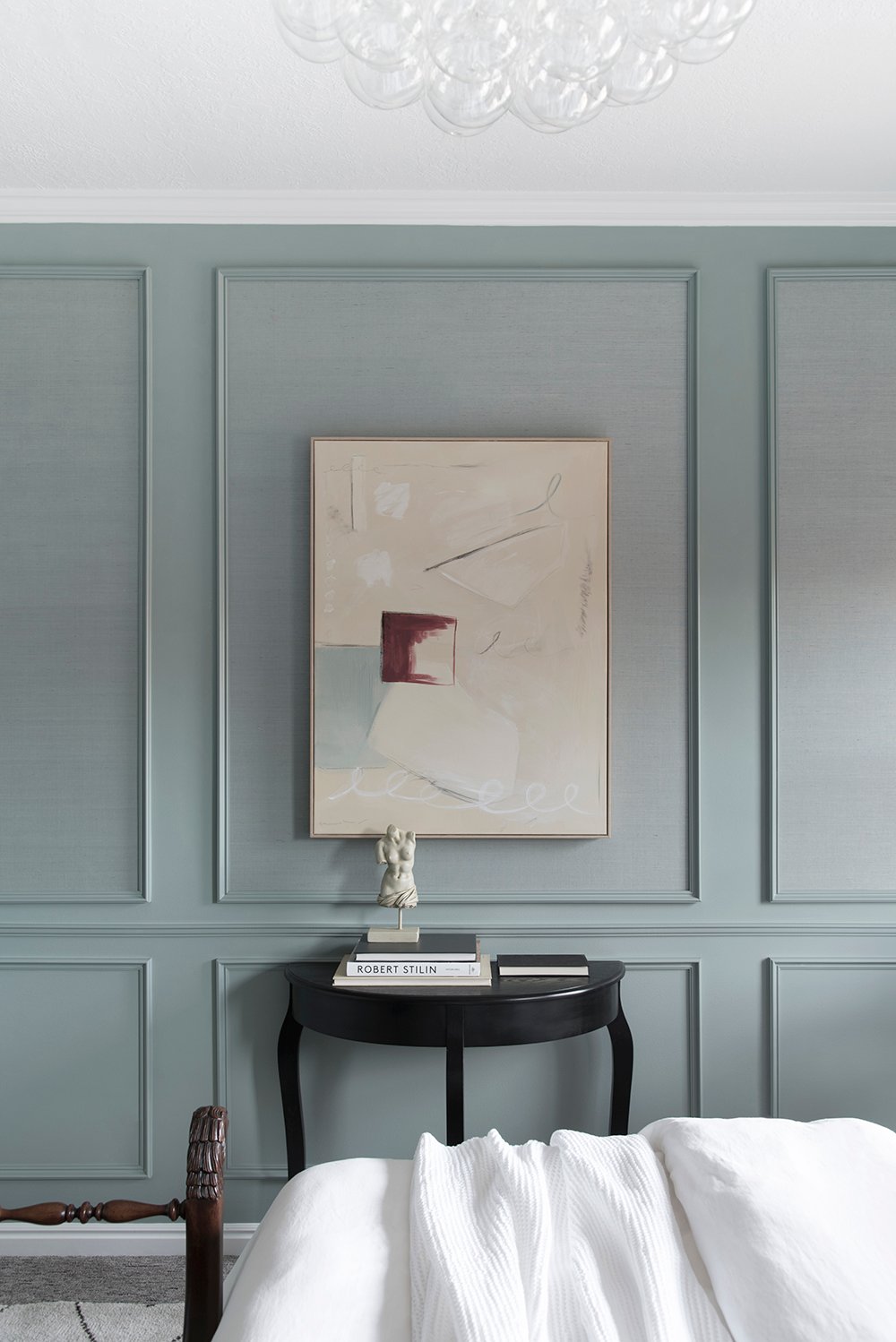
What is the golden ratio for millwork?
The golden ratio is definitely situational- it depends on the measurements in your home, the architectural style, the millwork you’ve selected, and the aesthetic you’re going for! Unfortunately it’s not a “one size fits all” type of equation or solution. There are definitely mathematics you can apply to ensure millwork looks it’s best though. I talk more about that in this post.
How do you install picture frame moulding?
This question is referring to panel moulding! We actually have a DIY tutorial for installing panel moulding right here. A piece of advice? Invest in miter clamps for this project. They come in very handy for clean looking millwork that won’t separate over time.
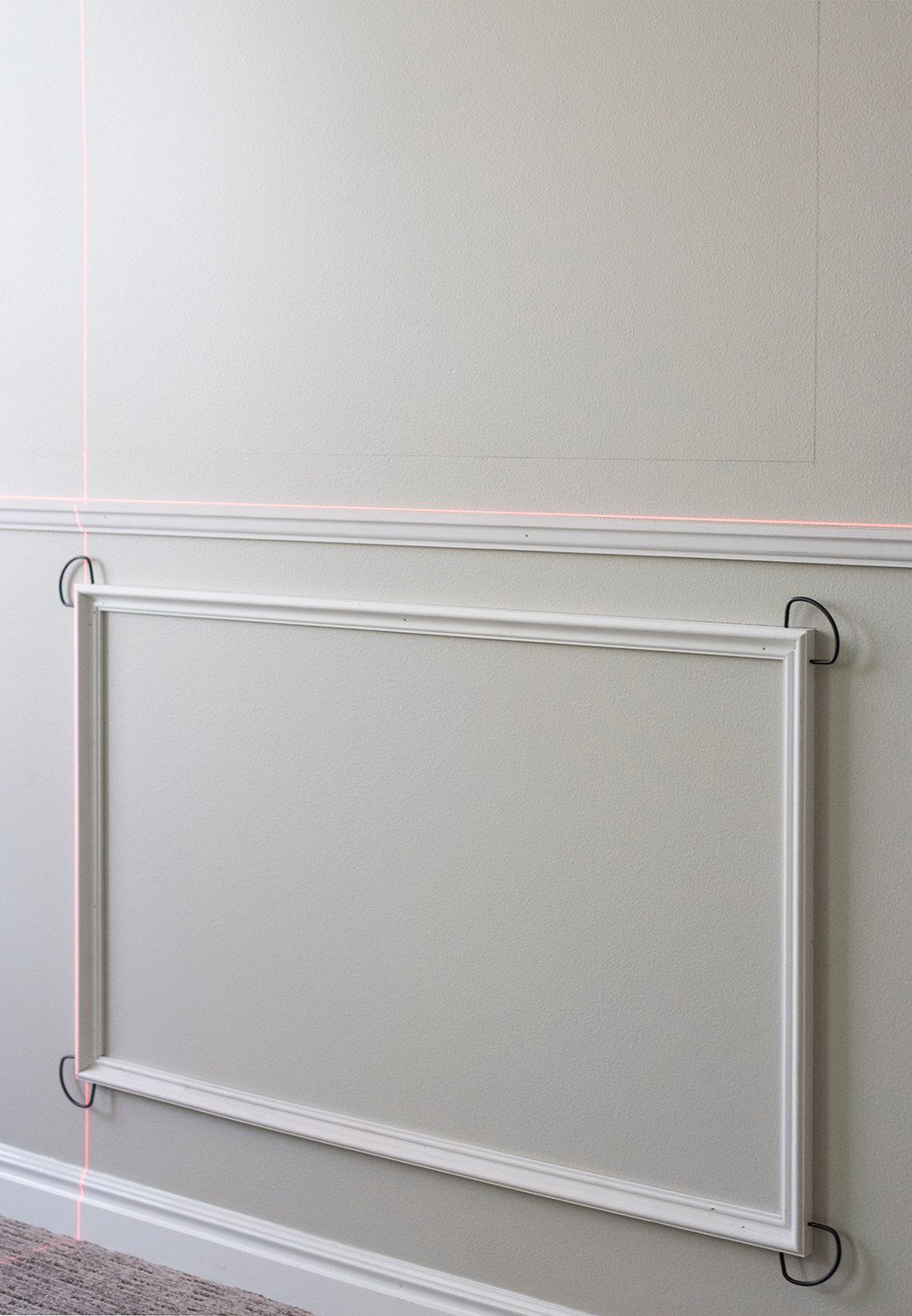
How do you deal with termination in awkward spots?
This was another question that may be worthy of a larger blog post with lots of example images. I’m pretty sure this question refers to examples like those awkward areas with a minuscule amount of negative space- like extra tall windows that *almost* connect to the baseboard, leaving you with 1/2″ of negative space in between the window casing and the top of the base. Those areas are very tricky (even for designers), so you have to find the best way to make those odd spaces feel intentional and terminate in a way that makes sense. Another common question was how to stop millwork if you’re not running it into the next room or another space… often times we’ll just miter a return, making it wrap around to feel intentional. Again- I think this probably deserves a longer conversation. Has this been an issue for anyone else, that you’d like me to further discuss?
Can you put millwork in a bathroom or shower?
Absolutely! We currently have crown in our guest bathroom shower. I have zero reservations about installing millwork in a bathroom or shower- it’s more about choosing the right material, the correct paint, and making sure you have adequate ventilation that is to code. For example, lots of people are intimidated to install art in a bathroom because of the moisture rating, but as long as the bathroom has been built to code, the art is framed appropriately, and you have the proper exhaust fan, it’s usually not an issue at all. The same goes for millwork! Would I install MDF crown in a steam shower without ventilation? No- I’d opt for a tile trim instead, but in a standard shower that gets proper ventilation and has an exhaust? I would… I’d paint it with a wet-rated paint to seal it nicely, and wouldn’t think twice. Sometimes it depends on the situation, but more often than not- if things are done correctly, it’s totally fine.
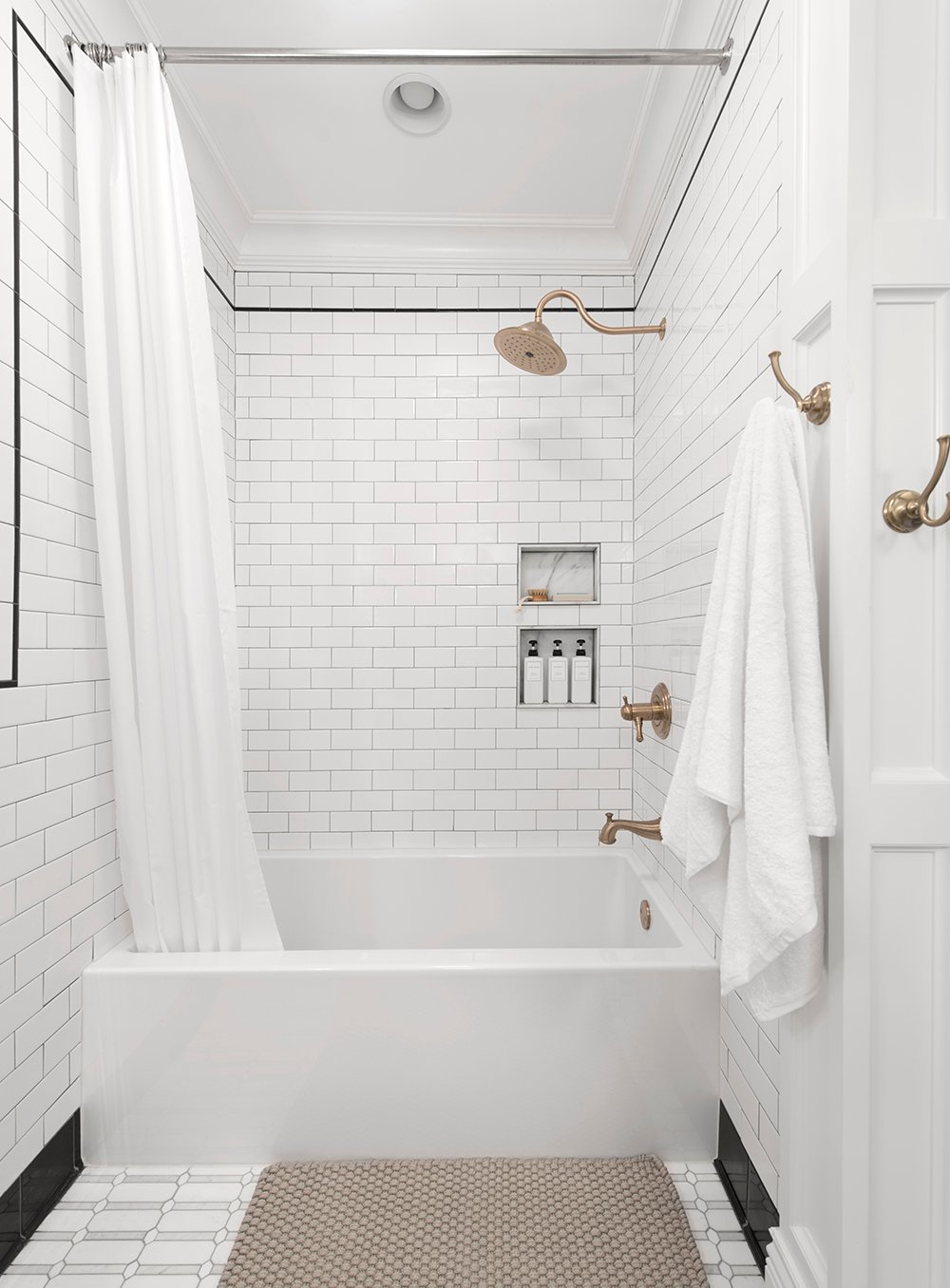
Can you install millwork on top of textured walls?
You technically can, but should you? My short answer is no. It’s so tricky to install millwork on heavily textured walls (without using tubes and tubes of caulk). It’s just not a good look. If you’re spending the time and money on millwork, I’d recommend smoothing, skim coating, or knocking down the texture for a cohesive aesthetic. Millwork and highly textured walls really don’t work well together from a visual point-of-view. Millwork draws your eye toward the wall, and most people don’t want to emphasize textured walls, as they can feel dated. Smooth or minimally textured walls work best for millwork application.
I’ve heard you talk about “an architrave”… what exactly is that?
Yes… an architrave is the trim or beam that rests upon the capitals or columns (in classical architecture). I like using an architrave in our home on top of a door or window in place of casing for a more grand look, now that we have taller ceilings.
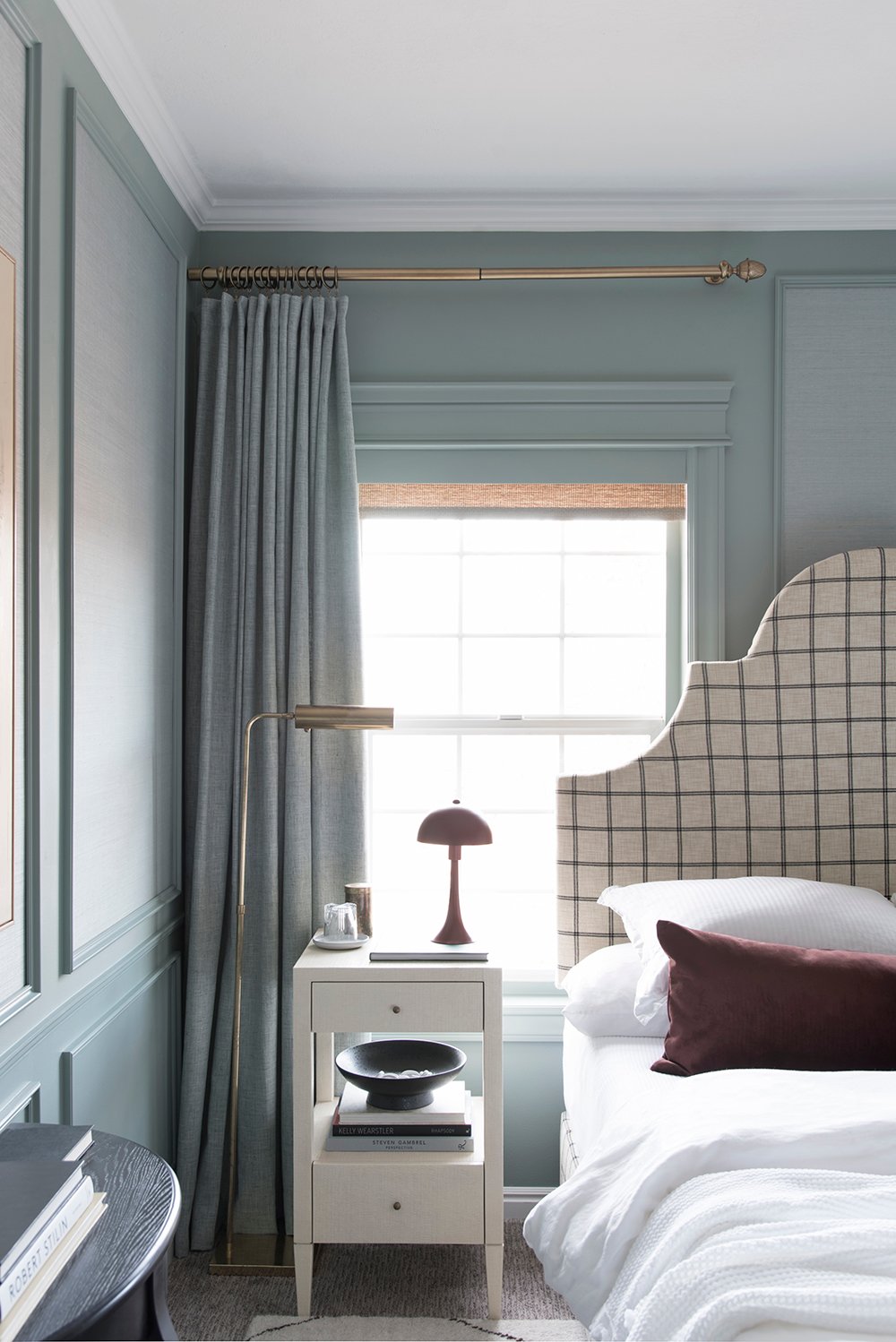
What is the point of millwork?
I actually love this question because when I was taking a millwork class in design school, the professor led with this question. The purpose of moulding isn’t to structurally support your home. That seems obvious. If you removed the casing, crown moulding, baseboard, and any other existing trim, the entire house wouldn’t come crashing down. It’s not structural. So what exactly does moulding & millwork do if it’s not functional? What’s the point? Millwork makes a home feel secure, balanced, sturdy, well-constructed, and of course- it’s beautiful from an aesthetic point-of-view. I’m going to use an example from school… think of a big room shaped like a shoebox: 4 walls, a ceiling, and a floor. You walk into the room, it seems/looks fine, now let’s imagine a wind storm is rolling in. You’re in the space and can hear the wind gusting on the opposing side of the wall. Take this same room and apply moulding… crown moulding, baseboards, panel moulding, columns (if the ceiling is super tall), etc. It feels and looks reinforced or safe (safe being the keyword)… even if the millwork is providing no real structural support, it gives us that “this is a well-built home” feeling. Homes with millwork make us feel secure, comfortable, and give us a sense of balance and grandeur. The same situation goes for moulding that has been installed with the wrong proportions… it can make you feel uneasy, unbalanced, or gives you the feeling that something is “off”. It’s an interesting aesthetic and psychological thing that I’ve LOVED learning about over the years.
Does millwork always need to be symmetrical?
Absolutely not! In fact- in most homes, symmetrical millwork is nearly impossible. In our home, nothing is perfectly symmetric (not even our living room!)– and we live in a Georgian colonial style house (which is typically a more symmetric style of home), so that’s saying something. The key is creating an asymmetric millwork plan that feels balanced and intentional.
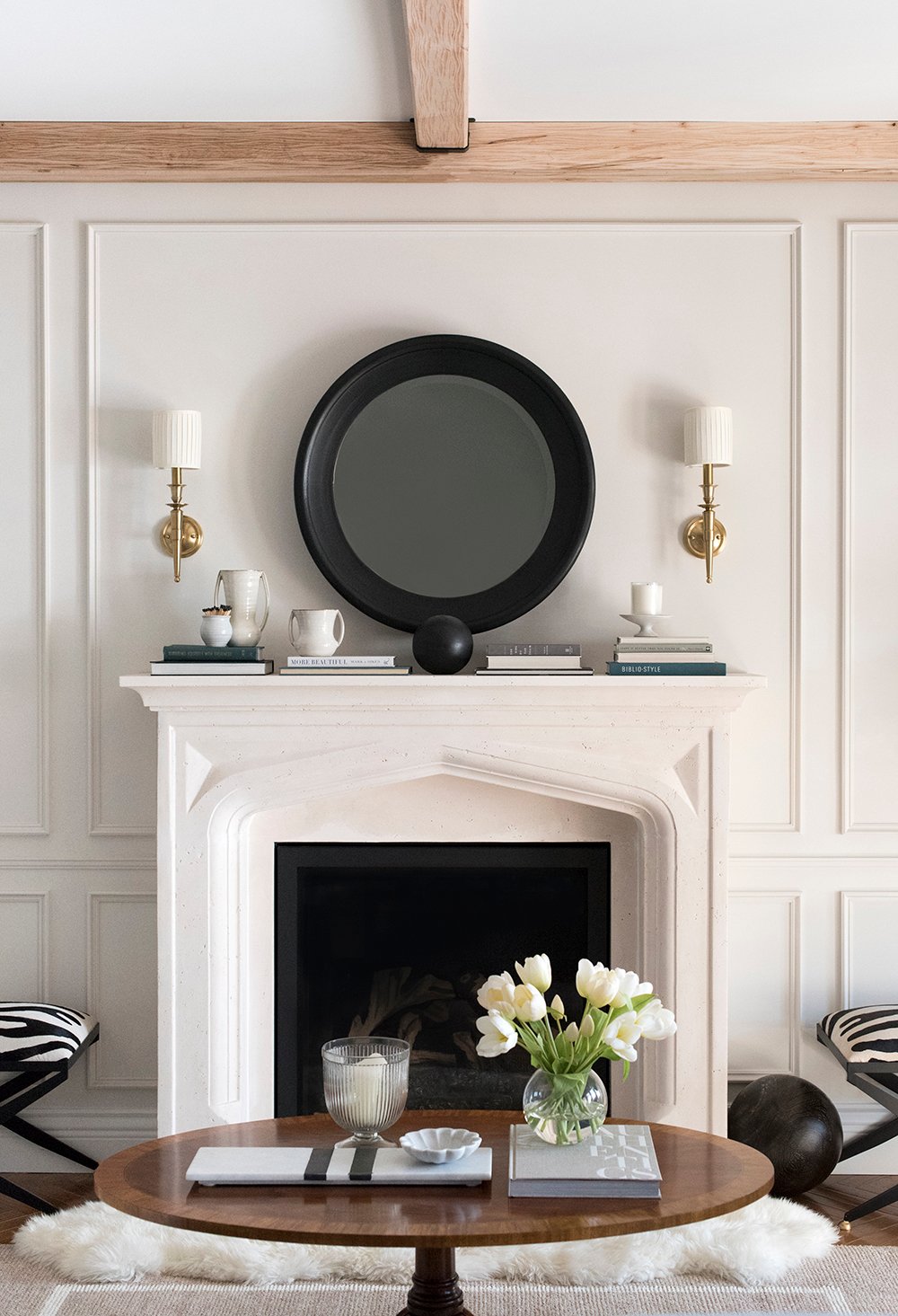
How do you decide how to layout panel moulding (one box, three boxes, how close to the crown & baseboard, etc)?
I do a lot of sketching to see what looks best visually! Placement and positioning are important. I try to bring balance to the room, I also consider our floor plan, furniture placement, architectural features (like windows & doors), etc. This is another question that doesn’t have a “one size fits all” solution. Each room presents a different set of design challenges. Coming up with the best formula and millwork profiles for your home helps, but each room will have different sized panels, in terms of width. It’s just a matter of figuring out what works best for each space.
Can you mix different styles of millwork within a home?
I’m always an advocate for doing what you love in your home! I prefer to keep millwork consistent and choose profiles that are cohesive, from the same collection, that feel like a family stylistically. That’s not to say that you can’t have variety… especially in rooms with shorter or taller ceilings, etc. I opted out of adding crown to our basement bath because the ceilings are so short. Those spaces might have different sized profiles to fit the space accordingly, but maybe their profiles are similar or feel related somehow. My personal preference is to keep things looking cohesive.
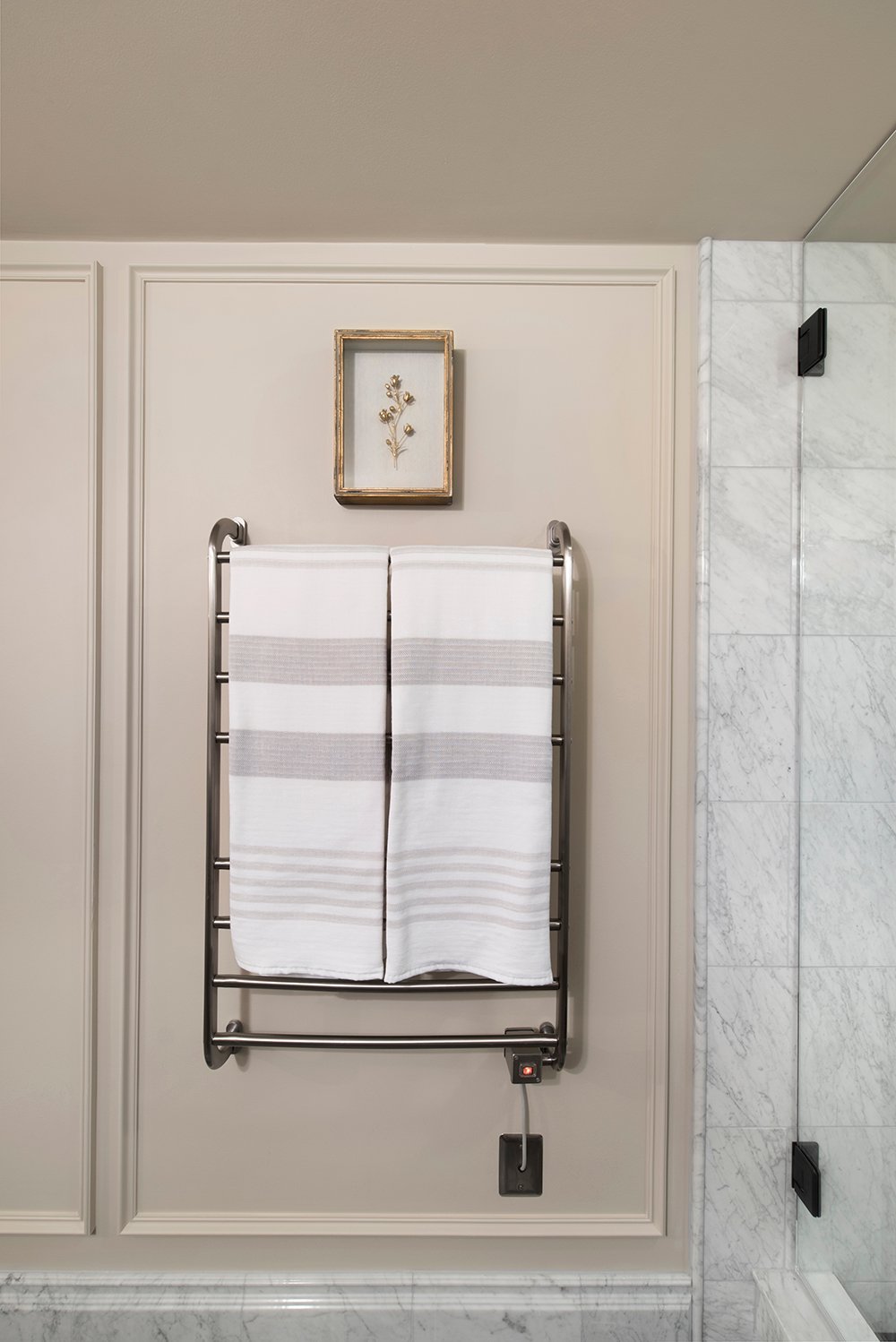
Is it acceptable to put millwork in a mid century home?
You can definitely install millwork in a mid century home, but I’d be selective in doing so. Make sure the profile is modern or minimal to fit the architecture of your home, try to get the scale right, and determine which rooms will receive millwork treatments. Maybe the more formal spaces warrant millwork, while others do not in a modern home? It’s totally up to you! My short answer- yes… it’s more than acceptable!
What paint finishes should you use on millwork?
This really depends on the look you’re going for. If you want a high luster or shine- go for a high gloss, lacquer, or enamel. If you’re looking for something less glam, go for a matte. Unless I’m doing something different- I usually paint my walls flat or eggshell and my trim and doors semi gloss. I like a textural contrast. Again, it totally depends on the aesthetic you’re trying to achieve.
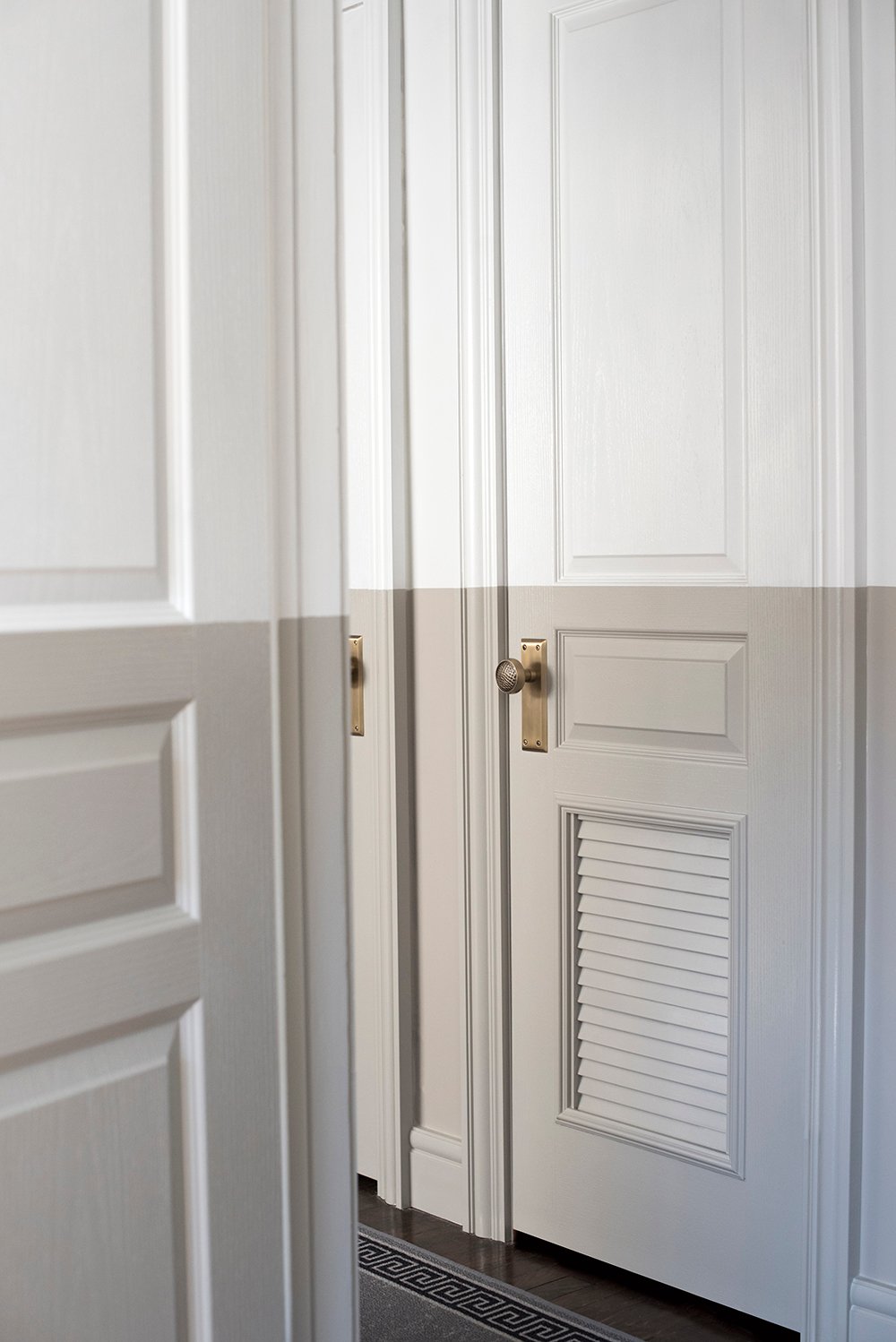
Is millwork difficult to install?
Yes and no. If you’re patient, are willing to learn, and have the right tools for the job- it just takes practice and time. Mitered corners are the most difficult part. I’d say crown moulding is probably the most difficult piece of millwork to install. I’ll also say this- poorly installed millwork is noticeable. It’s a project that craftsmanship should absolutely be considered. I think finish carpentry is definitely an art form! I hate seeing projects that were obviously rushed, where tubes of caulk or filler foam was used.
How do you feel about contrast trim?
I love it! Whether you’re talking about finish or color- I like having some contrast between the wall and the trim. I think it adds depth.
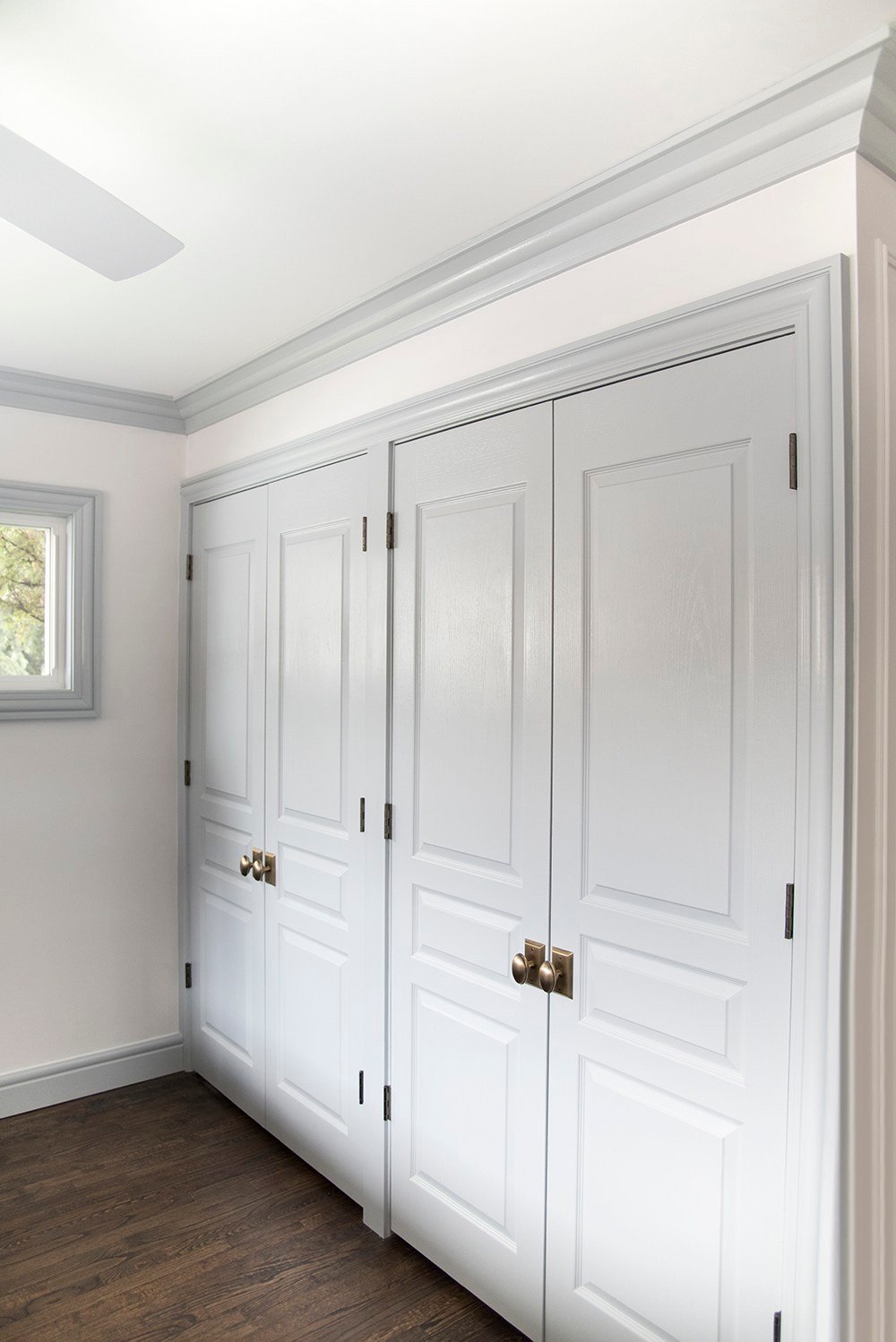
Can you install crown moulding in some rooms, but not others?
You can! Baseboard typically carries throughout, but depending on the style of your home and size / function of your room- crown can go either way.
Could you please link the millwork profiles you have in your current home?
Of course! I have all of the profiles from our current home linked in this post.
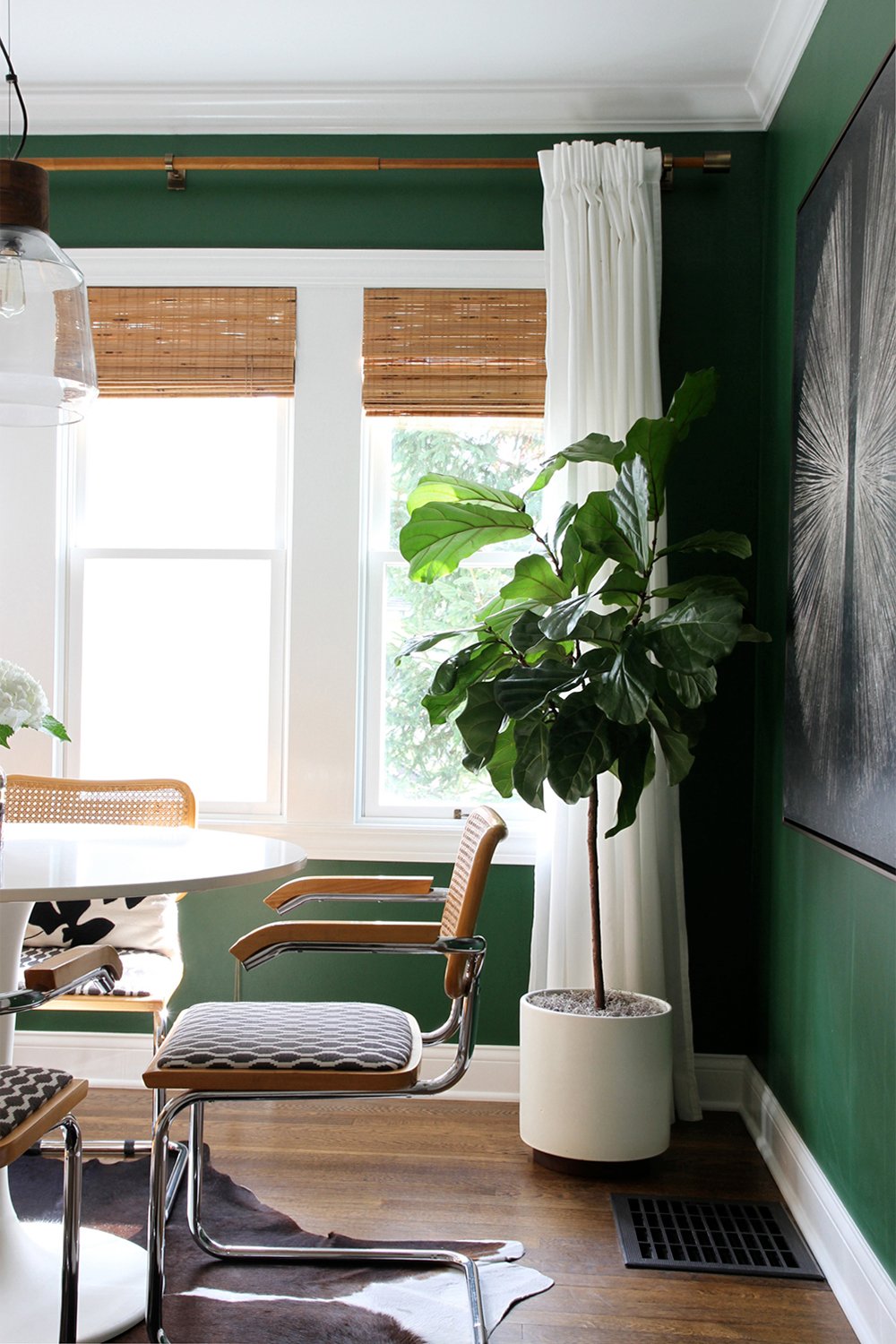
Why don’t you use quarter round?
I kind of have a love / hate relationship with quarter round, which is most often installed at the bottom, frontside of the baseboard. In our first home, pictured above, we installed quarter round everywhere. I found that it got dinged up pretty badly from the vacuum, moving furniture around, etc. I felt like the hassle wasn’t worth it and it’s an extra piece that visually I could live without. In our previous home we bought quarter round to use, and I asked Emmett to donate it. He did such a fantastic job installing the base, that fit snug to the floor, it just didn’t feel necessary. In our current home, I kept with that pattern and opted out of quarter round once again. It just feels clean and functional to me! Totally a personal preference.
Lastly, I’m going to drop in a couple images from our home that are labeled, so you can get a feel for the basic millwork vocabulary. Sound good?
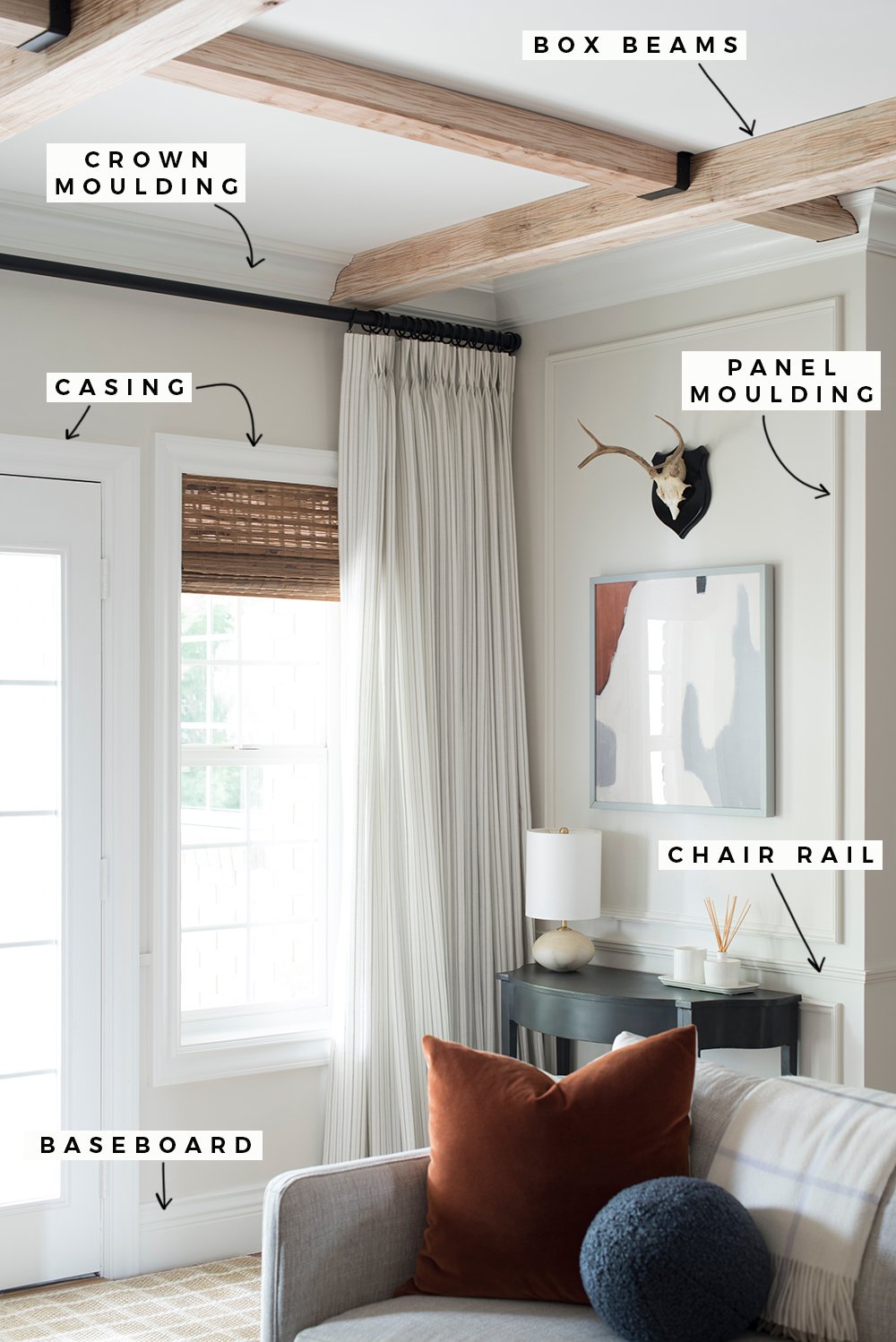 I always think visuals, lists, and labels are helpful! That’s my preferred style of learning, so I’m hoping these will help you identify the different trim pieces.
I always think visuals, lists, and labels are helpful! That’s my preferred style of learning, so I’m hoping these will help you identify the different trim pieces.
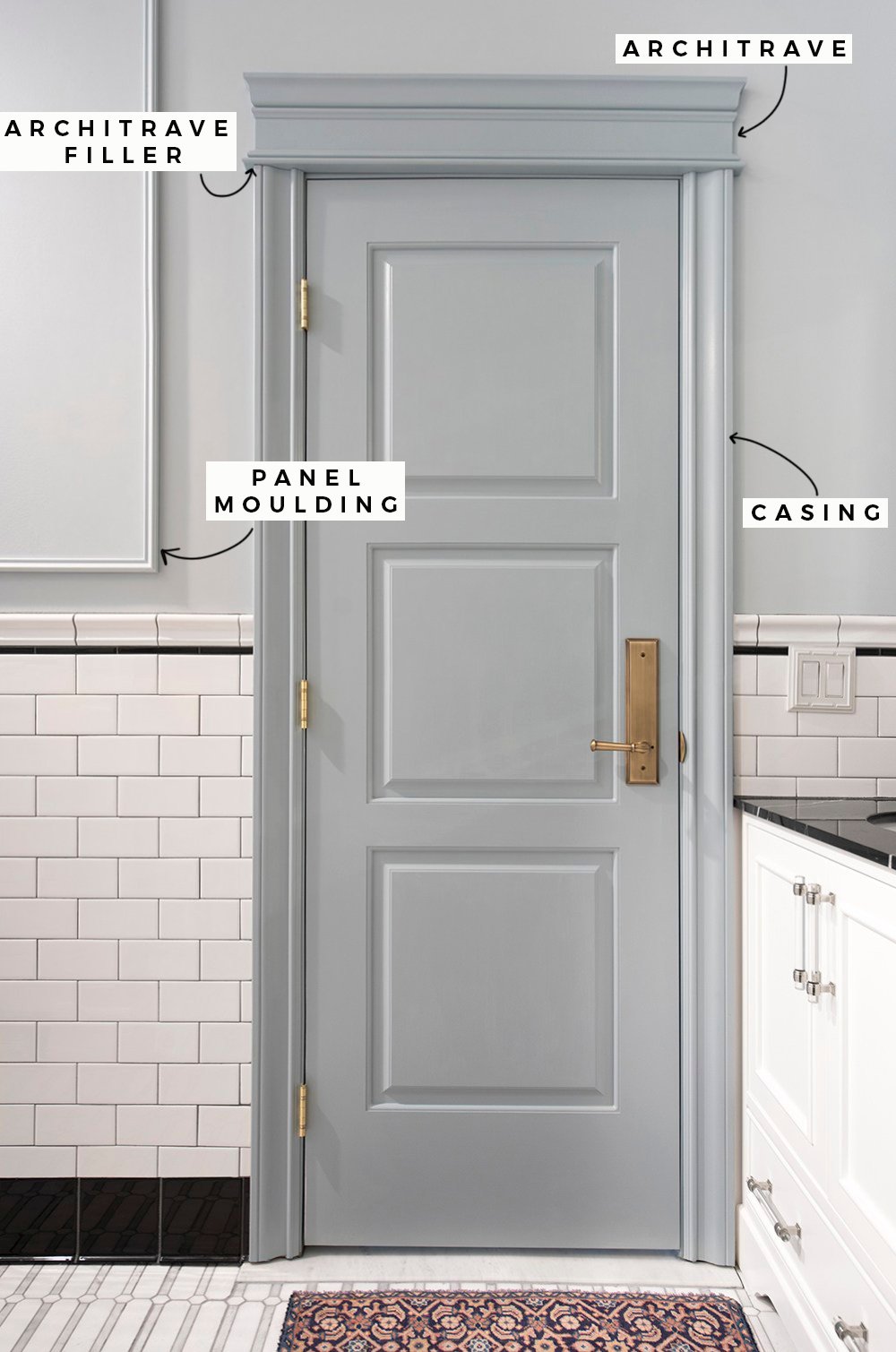 Like I said, I received an insane amount of questions (many were similar), that I think warrant an entire blog post for me to elaborate on ideas, explanations, and thoughts. Look for those in the coming months, and let me know if there are any questions or topics discussed in this post (or elsewhere) that you’d like me to expand upon. Was this helpful?
Like I said, I received an insane amount of questions (many were similar), that I think warrant an entire blog post for me to elaborate on ideas, explanations, and thoughts. Look for those in the coming months, and let me know if there are any questions or topics discussed in this post (or elsewhere) that you’d like me to expand upon. Was this helpful?
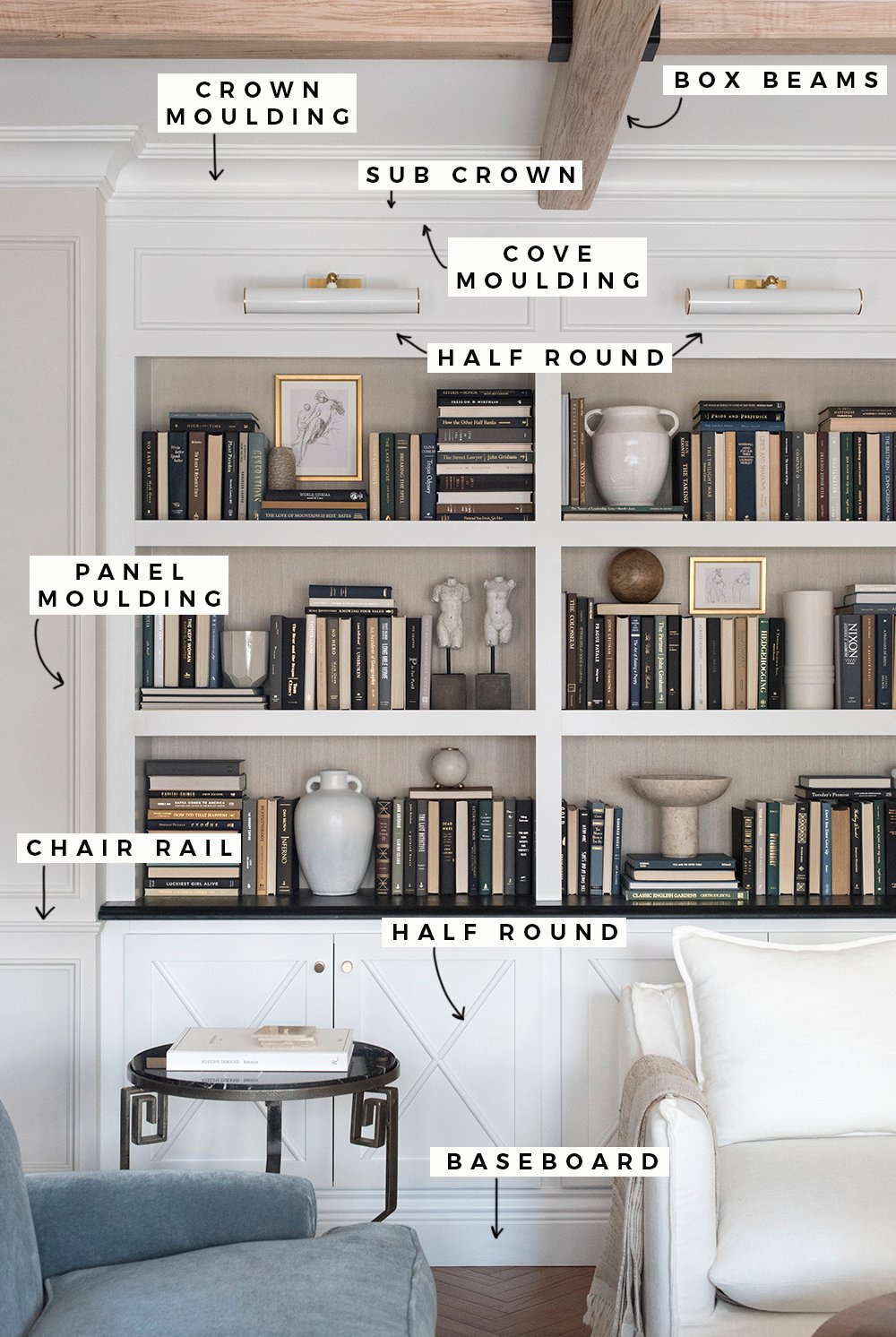 At the end of the day, please remember this is my perspective and opinion… but you should always do what you love in your home! Just because I enjoy following design & architecture rules, doesn’t mean you have to stick to the book. I’m also still learning myself… there is so much to know about millwork and architecture- I’m all about continued education from whatever resource is available. It’s fun to talk design with you! I love that many of you are super interested in this topic. Hit me with your questions and comments below!
At the end of the day, please remember this is my perspective and opinion… but you should always do what you love in your home! Just because I enjoy following design & architecture rules, doesn’t mean you have to stick to the book. I’m also still learning myself… there is so much to know about millwork and architecture- I’m all about continued education from whatever resource is available. It’s fun to talk design with you! I love that many of you are super interested in this topic. Hit me with your questions and comments below!
